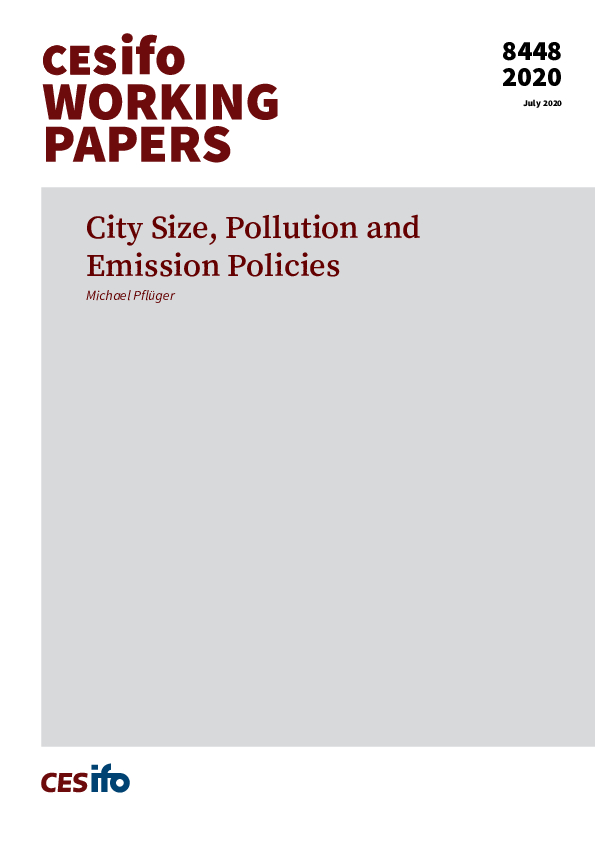City Size, Pollution and Emission Policies
CESifo, Munich, 2020
CESifo Working Paper No. 8448

This paper develops a model with an endogenous number of cities to explore whether local governments establish the optimal city size when key activities in the city are associated with emissions that harm consumers. In contrast to extant research, our model is fully micro-founded with respect to the urban sector and the agglomeration mechanism as well as the modelling of pollution and pollution abatement. We derive two key insights. First, if the national government implements a permit system (equivalently, pollution taxes) that allow for emissions as in the first-best, cities chosen by local governments are too small. Second, if no emission scheme is implemented, or if emission policies are too lax, cities steered by local governments may become too large. The tractability of the model also allows us to uncover the determinants of optimal city sizes, emissions, emission intensities and determinants of locally chosen city sizes, as well as to address the second-best emission policy and extensions to city asymmetries, a fiscal externality, local pollution, generalized commuting costs and further pollution sources.
Public Finance
Resources and Environment